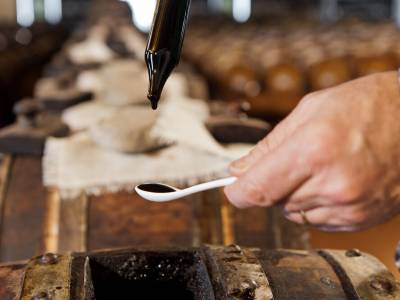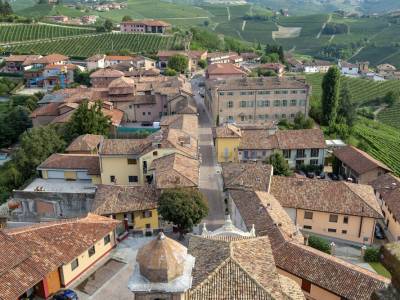Why Venetian Palaces have an Ottoman influence
27 Sep 2023 Magazine TALESCOLLECTION 2148Curious traveller and history lovers will find innumerable and unbelievable anecdotes about this relationship.
They can listen to the memoirs of Venetian Ambassadors in Istanbul committed to ensuring that awkward incidents such as attacks on Ottoman shipping by Venetian did not give cause for the Sultane to declare war. Or read about the first modern secret service, headquartered in the Doge’s Palace and headed by the infamous Council of Ten. Or the story of the painting that helped to end a war.

Ottoman Influences at Metropole Hotel in Venice
For centuries, the Republic of Venice and Ottoman empires have been trading partners, in a mutually beneficial relationship providing each with access to essential ports and precious goods.
Though their wars intermittently discontinued their relationship, both empires relied on commerce for their economic well-being. The trade never really stopped, even during the conflicts.
A Venetian ambassador once revealed, “being merchants, we cannot live without them.” Venice provided the Ottomans with finished goods such as soap, paper, and textiles while the Ottomans sold grain, spices, raw silk, cotton, and ash for glass making.
The same ships that carried goods and raw materials also transported luxury objects such as carpets, inlaid metalwork, illustrated manuscripts, and glass. Affluent Ottomans and wealthy Venetians were avid collectors of the exotic goods of their trading partner, and the art of their empires came to influence one another. At its peak, The Ottoman Empire was one of the most influential powers in the world, covering a vast territory ranging from the Middle East and North Africa to Budapest.

View of Istanbul, Turkey
Venice and the Ottoman Empire were very different one from another, but not as much as we figure.
The rise of Venice in the Eastern Mediterranean Sea
The prosperity of Venice started with the choice to support the Byzantine empire against the Normans in the first years of XI Century.
In gratitude for Venetian aid against the Normans, the Byzantine emperor Alexius I Comnenus granted Venice open trade throughout the Byzantine Empire, with no customs dues. This privilege marked the beginning of Venetian activity in the East (1082).
But Venice had no ambition to create an empire and rule it, but only expand the commerce.
The history of Venice’s possessions in the Aegean area started in the 13th century with the commitment of the Republic to transport the Fourth Crusade to the Holy Land. This forces instead attacked ed sacked the Byzantine capital Costantinopoli, to the ultimate advantage of Venice economic interest In The Levante.
The Venetian forgot the benevolence of Byzantine Emperor. When the City felt under the crusaders in 1204, the Doge Enrico Dandol, negotiate to get vast territories once part of the Byzantine Empire in Greece. Corfù, Kythera, Koroni, Lepanto, Methoni, Argos and many others ended under the Venetian sovereignty.
Venice possession was mainly insular, reflecting the needs for ports of call for Venetian galleys on their voyages to the Black Sea and the eastern Mediterranean.

View of Venice
The rise of the Ottoman Empire
The Ottoman Empire was created by Turkish, a population migrating from Central Asia. From the very beginning, the Imperial purpose was a clear mission. It ended only in 1922 when the Turkish Republic replaced it.
The western people are used to perceive the Ottomans as a war machine, so strong that was able to arrive at the doors of Wien.
But the excessive emphasis on this character has deflected our attention to the appreciation of how the Ottomans governed their Empire. The military conquest can create an Empire but cannot sustain it.
The Ottomans had a great ability in governing their territories. They created a fascinating cosmopolitan society, where any religions, nationalities or ethnic were welcome if they can contribute to the development of the Empire.
Parallel to this expansion of Venice in the Balkans, a fledging Ottoman Empire took control of the Byzantine territory in Asia and the XIV Century, and the Byzantine had lost almost all of Asia Minor to several independent Turkish states.
One of these, in the northwestern of Asia Minor, ruled by Osman, the founder of Ottoman Empire dynasty expanded his rule through wars of conquest and Ottoman empire start to threaten Byzantine island possession.
In 1354 The Ottoman armies entered Europe the first time. After the defeat of the Serbs, in the battle of Kossovo in 1389, Constantinople became a Byzantine island surrounded by Ottoman possessions. In 1453 Constantinople also fell and Mehmed, the conqueror, transformed it into the Ottoman capital, now Istanbul.
A Complex Relation
During the next 450 years, the territory of the Ottoman Empire expanded or contracted, as a consequence of the conflicts with European powers. Among the latter, Venice was the most significant one.
It’s a thin line between love and hate.
And for sure, it was not only business.










